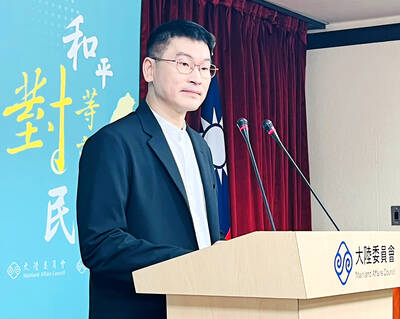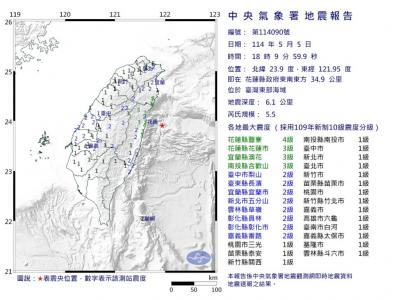The air force is preparing to test two upgraded versions of its locally developed fighter aimed at increasing the plane's range and firepower, the authoritative Jane's Defense Weekly said.
The two prototypes, being produced by the Aerospace Industrial Development Corp (AIDC), are an improved version of the Indigenous Defense Fighter (IDF), the weekly said in an article to be published on Wednesday.
It said both the range and weaponry of the plane were intentionally limited under the US technology-transfer program that was crucial to the IDF's development in the 1980s.
Prototypes
"We are preparing for ground tests. We have only manufactured two prototypes. If everything goes well we can put it into production after the air force approves the prototypes," Sun Tao-yu (
The upgrade allows the IDF to carry an additional 771kg of fuel and includes an improved avionics suite, retrofitted electronic-warfare capabilities and new weapon systems.
The landing gear has been strengthened to accommodate the added fuel and payload, but a plan to include dielectric radar-absorbing properties for a "stealth" fuselage was dropped due to concerns over weight.
The three-phase program was launched in 2001 and recently saw completion of its second phase.
More missiles
The first phase involved increasing the number of Tien Chien 2 (Sky Sword 2) air-to-air missiles from two to four, as well as integrating the new Tien Chien 2A anti-radiation missile and the new Wan Chien (Ten Thousand Swords) cluster bomb.
The second phase involved the upgrading of mission computers; electronic countermeasures; electronic warfare systems; an advanced "identification friend or foe" system and terrain-following and radar improvements.
Phase three will involve ground and air testing, with service entry scheduled for 2010 if the program is approved.
AIDC produced 130 IDFs during the 1980s to replace the nation's ageing Lockheed F-104 Starfighters and Northrop F-5 Tigers.

An essay competition jointly organized by a local writing society and a publisher affiliated with the Chinese Communist Party (CCP) might have contravened the Act Governing Relations Between the People of the Taiwan Area and the Mainland Area (臺灣地區與大陸地區人民關係條例), the Mainland Affairs Council (MAC) said on Thursday. “In this case, the partner organization is clearly an agency under the CCP’s Fujian Provincial Committee,” MAC Deputy Minister and spokesperson Liang Wen-chieh (梁文傑) said at a news briefing in Taipei. “It also involves bringing Taiwanese students to China with all-expenses-paid arrangements to attend award ceremonies and camps,” Liang said. Those two “characteristics” are typically sufficient

A magnitude 5.9 earthquake that struck about 33km off the coast of Hualien City was the "main shock" in a series of quakes in the area, with aftershocks expected over the next three days, the Central Weather Administration (CWA) said yesterday. Prior to the magnitude 5.9 quake shaking most of Taiwan at 6:53pm yesterday, six other earthquakes stronger than a magnitude of 4, starting with a magnitude 5.5 quake at 6:09pm, occurred in the area. CWA Seismological Center Director Wu Chien-fu (吳健富) confirmed that the quakes were all part of the same series and that the magnitude 5.5 temblor was

The brilliant blue waters, thick foliage and bucolic atmosphere on this seemingly idyllic archipelago deep in the Pacific Ocean belie the key role it now plays in a titanic geopolitical struggle. Palau is again on the front line as China, and the US and its allies prepare their forces in an intensifying contest for control over the Asia-Pacific region. The democratic nation of just 17,000 people hosts US-controlled airstrips and soon-to-be-completed radar installations that the US military describes as “critical” to monitoring vast swathes of water and airspace. It is also a key piece of the second island chain, a string of

The Central Weather Administration has issued a heat alert for southeastern Taiwan, warning of temperatures as high as 36°C today, while alerting some coastal areas of strong winds later in the day. Kaohsiung’s Neimen District (內門) and Pingtung County’s Neipu Township (內埔) are under an orange heat alert, which warns of temperatures as high as 36°C for three consecutive days, the CWA said, citing southwest winds. The heat would also extend to Tainan’s Nansi (楠西) and Yujing (玉井) districts, as well as Pingtung’s Gaoshu (高樹), Yanpu (鹽埔) and Majia (瑪家) townships, it said, forecasting highs of up to 36°C in those areas